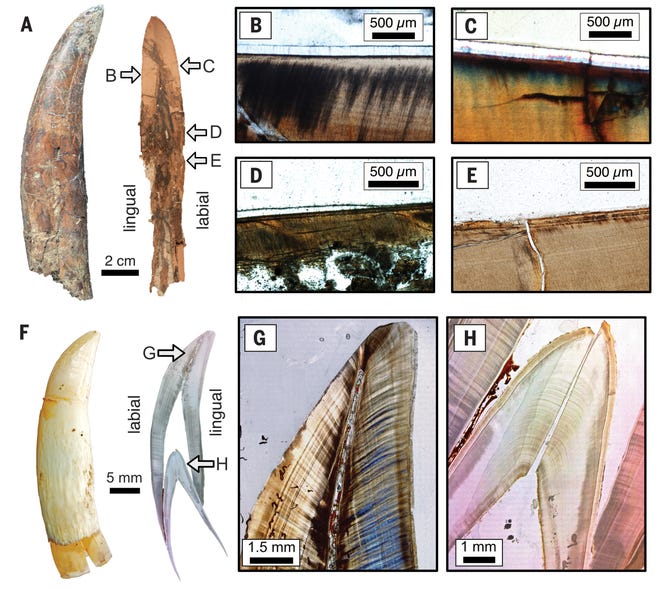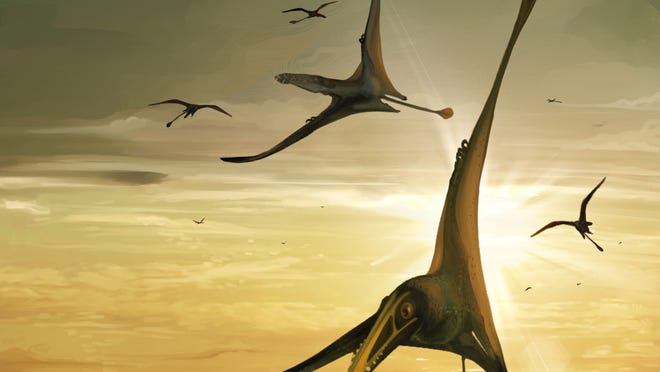- T. rex teeth — possibly up to six inches long — were thought by many to be too big not to protrude.
- In recent years, paleontologists have debunked other stereotypical portrayals of the dinosaur.
- Some critics are pushing back against a new study that says Tyrannosaurus rex had lips.
The world’s understanding of the Tyrannosaurus rex as a fearsome-looking predator with a face of razor-sharp fanged teeth may soon need to shift.
Similar to humans, the T. rex had lips that concealed its teeth, a stark contrast to popular, toothy depictions of the dinosaur we’re accustomed to in monster movies, a study published Thursday in the journal Science explained.
The dinosaur’s teeth, which are often portrayed as protruding from its jaw, were actually hidden behind lizard-like lips, which paleontologists say they can prove after studying the tooth of a T. rex relative, Daspletosaurus, which provided key supporting evidence for the lip theory.
“This pattern of portrayal largely had to do with relatedness between dinosaurs and crocodilians and the relationship between tooth and jaw size,” the study said.
Scientists compared skull lengths and tooth sizes of more than 20 fossilized theropod dinosaurs and several other lizard species to prove the theory that a T. rex could likely have fit its teeth behind lips.
After embedding the Daspletosaurus tooth in resin and slicing into it with a diamond-studded saw, scientists discovered that it lacked significant degradation — signaling that it hadn’t been exposed to dry air in a lip-free mouth.

Over the last several years, more stereotypical portrayals of the T. rex have been debunked. Paleontologists found evidence to suggest the dinosaur could not run and had a bigger tail than previously thought.
“It is time that we have a big shake-up of what we think these dinosaurs looked like in wider culture,” the study’s co-author, Mark Witton, told the Wall Street Journal. “We’ve really put some new data on the table that I think makes it now pretty indefensible to have the goofy-looking theropods with their teeth hanging out.”
More coverage from USA TODAY
Camille Fine is a trending visual producer on USA TODAY’s NOW team.


